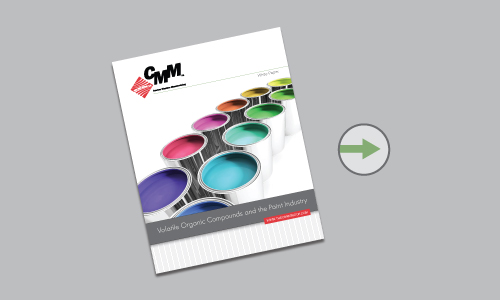Since the dawn of time, humans have wanted to leave their mark. Whether it’s a cave, the Sistine Chapel, or the walls of your home, humans have found ways to combine pigments and carriers for the past 65,000 years in order to leave a lasting impression on a surface. While paint has been around for millennia, mass manufacturing, understanding of volatile organic compounds, and regulations regarding production are a new concept.
VOC Abatement in the Paint and Coatings Industry
New concept or not, these regulations still control the materials you use, the processes you employ, and the amount you emit, and crossing the line can cost you. To help paint manufacturers better understand the challenges at hand and the opportunities to remain compliant while keeping operating costs reasonable, we have written a new whitepaper on VOC Abatement in the Paint and Coatings Industry.
In this whitepaper, available for download here, we will discuss the basics of VOCs, the concerns that paint manufacturers have, the regulations set forth by the Environmental Protection Agency, the environmental goals designed by coatings industry groups, and the best practices for reducing your environmental impact as a paint manufacturer.
Designed for those in the paint and coatings industry (you can learn more about our general VOC Abatement Guide here), this whitepaper will explore the following topics and provide insights on how to control costs while controlling emissions:
- Background: A Brief History of Paint and Paint Manufacturing—65,000 BCE to Present
- Regulatory Oversight in the Paint and Coatings Industry
- Volatile Organic Compounds and Hazardous Air Pollutants—Health, Environmental, and Economic Impacts of Both
- Why Now is the Time to Take another Look at Your VOC Abatement Processes—Reputation, Regulations, and an Industry Committed to Sustainability
- Pollution Control Options for the Paint and Coatings Industry
- Case Studies and Related Reading
Preview and Download the Entire VOC Abatement Guide for Paint and Coatings Below
Paint has been part of society since prehistoric times, evolving with societal needs, providing protection to surfaces, improving the aesthetics of our homes, automobiles, and buildings, and keeping us in our lanes on the road. In the last two centuries, paint has continued to evolve to meet the needs of people, businesses, other manufacturers, and in the last 50 years, the environment.
We hope this guide serves as an educational document and useful tool for making an informed decision about your options as a paint manufacturer in the 21st Century. We invite you to read the first three pages below, download the entire guide here, and contact us to learn more about your VOC Abatement options.




